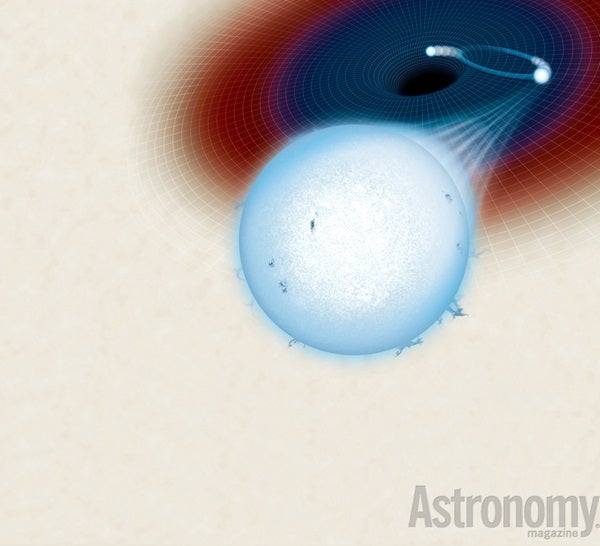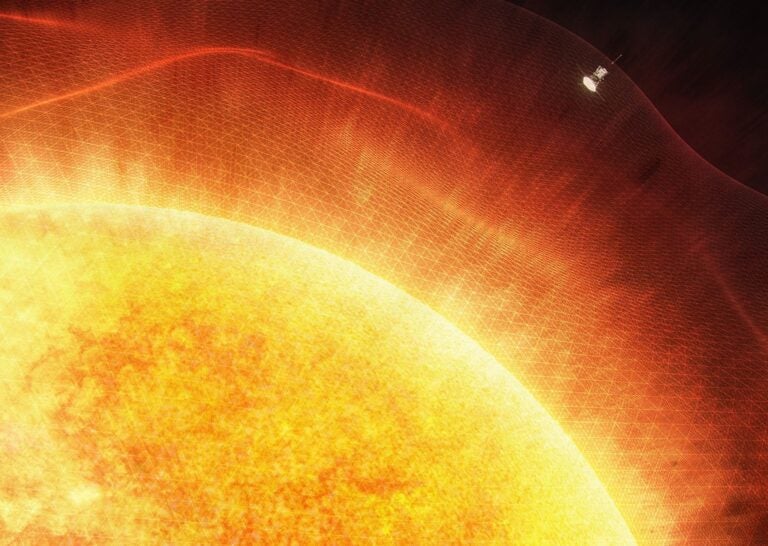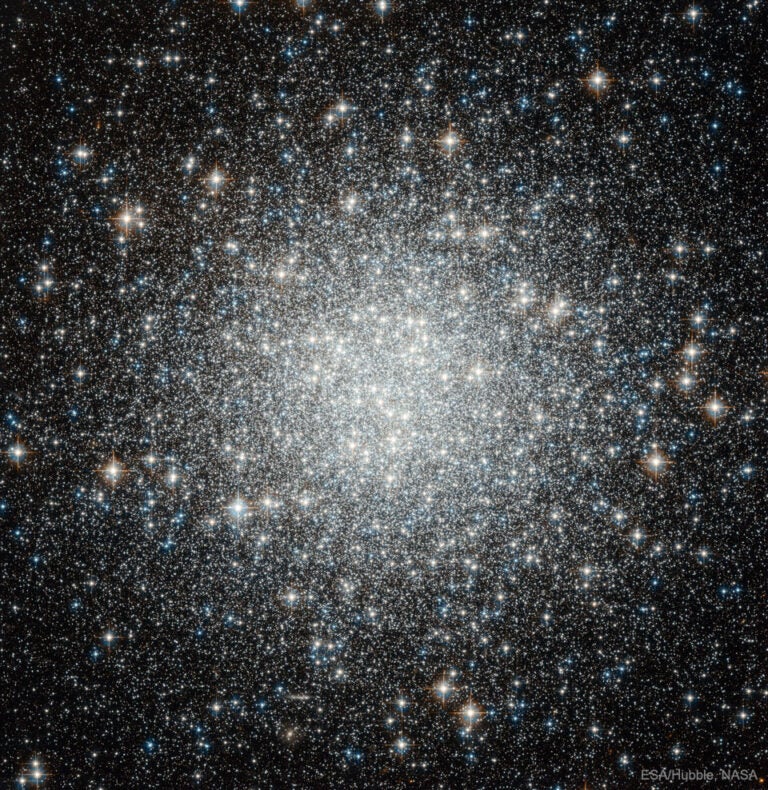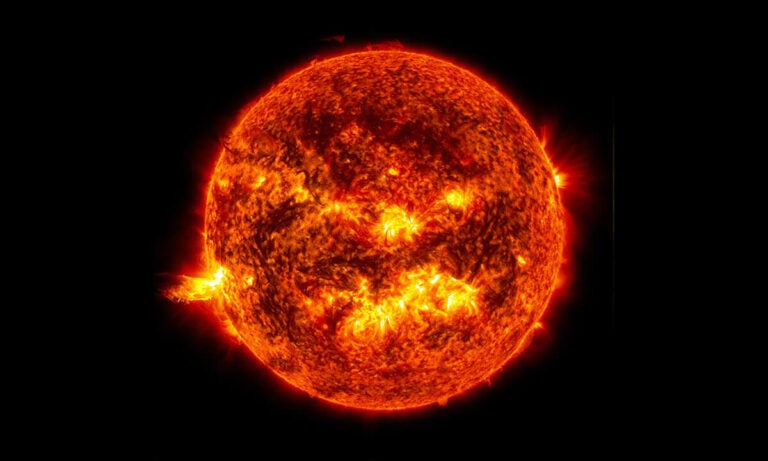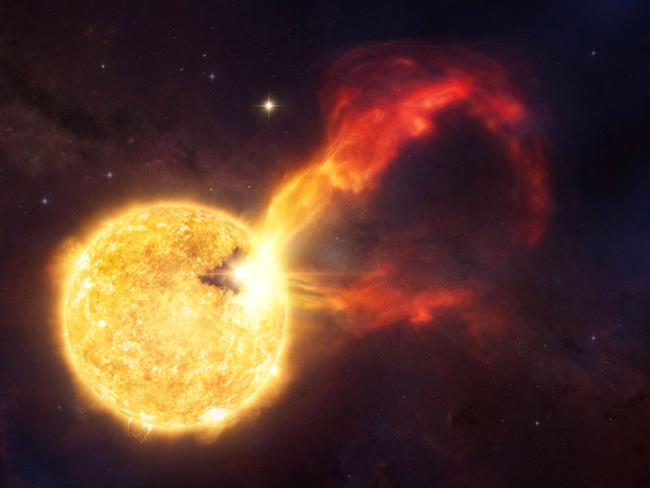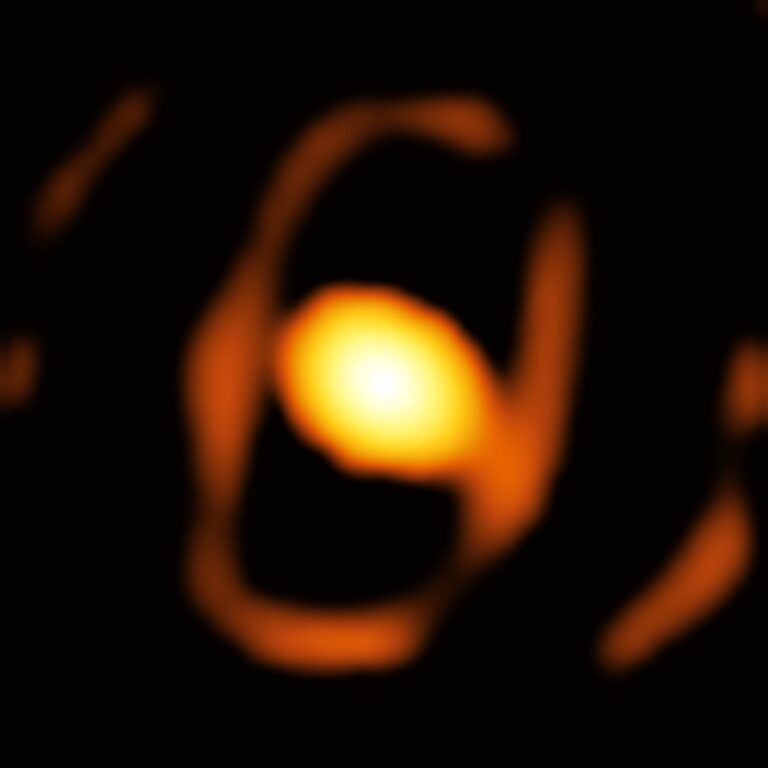Can we get out of here? That’s the question pondered for centuries. How do we permanently leave Earth? A cannonball fired upward always returned. With a greater explosive charge and a higher speed, a shell went farther. It wasn’t hard to figure out what speed an object would need to fall around Earth’s curve and leave our planet permanently. It is 6.96 miles (11.2 kilometers) per second. This is Earth’s escape velocity.
Sounds like a simple concept, and it is. Every celestial object’s mass determines how strongly it glues to itself any nearby planets, moons, or other stars. For the Sun, the escape velocity is a whopping 384 miles (618km) per second if you start out just above its surface. But by the time an object has managed to flee from the Sun to arrive here at Earth’s distance, the escape speed has fallen off to just 26 miles (42km) per second. That’s still faster than our best rockets, which can go only 10 miles (16km) per second. Thus, it’s easier to escape our world than to fight our way outward and wrench free from the Sun’s more insistent grasp.

Bringing the universe to your door. We’re excited to announce Astronomy magazine’s new Space and Beyond subscription box – a quarterly adventure, curated with an astronomy-themed collection in every box. Learn More >>.
Our Milky Way Galaxy, composed of at least 200 billion suns, has its own escape velocity, and it’s nothing trivial. For anything to leave, it needs to travel more than 180 miles (300km) per second. Not surprisingly, no star in our galaxy had ever been found to possess such a speed. Put another way, the immense, beautiful azure spirals and golden nucleus of our Milky Way constitute an integrated unit where all components are attached forever.
Forever, that is, until 2005. That’s when astronomers found the first runaway.
As early as 1988, astronomer Jack G. Hills of Los Alamos National Laboratory in New Mexico had discovered a mathematically possible way for a star to escape the galaxy. If it was a member of a binary star system, and if it passed a precise distance from the supermassive black hole in our galaxy’s center, it could set in motion an intriguing high-stakes pinball game. The black hole could, in theory, yank one member of the binary system in such a way that the other member gets flung off at incredible speed — fast enough to permanently break away from the galaxy.
It could happen. But has it? In 2003, astronomers starting searching for such objects — and reported one only two years later. Astronomers Warren Brown, Margaret Geller, Scott Kenyon, and Michael Kurtz discovered it using the enormous 6.5-meter telescope at the MMT Observatory just south of Tucson, Arizona. It’s a dazzling blue star of spectral type O, with the kind of high metal content expected of stars born in the galaxy’s core. Except that this star is nowhere near there. Instead, it’s whizzing through the constellation Hydra the Sea Serpent in the Milky Way’s suburbs at 433 miles (697km) per second — more than twice the speed necessary to permanently leave the galaxy behind.
This 20th-magnitude star, about 100 times fainter than the dimmest ones viewable through good backyard telescopes, is named SDSS J090745.0+024507. It is currently located 362,000 light-years from the center of our Milky Way Galaxy, after having made a beeline from there since its birth 80 million years ago.
This was the fastest-moving star in the Milky Way Galaxy. Could there be others? Once Hills’ 1988 prediction was validated, astronomers started looking, but it wasn’t an easy quest. Statistically, up to 1,000 stars could have had a similar close encounter with the 4-million-solar-mass black hole at our galaxy’s center and yet, contrary to the way everyone imagines black holes act, were not pulled in but instead flung violently away. So estimates Scott Tremaine of Princeton University in Princeton, New Jersey. But how to find such faint stars among the 200 billion populating the Milky Way?
By getting lucky. As of 2015, astronomers have found about 20 of these super-fast stars, including a compact star known as US 708 that is moving faster than any other star ever observed in the Milky Way. Traversing our galaxy at a crazy-fast 746 miles (1,200km) per second, it will escape the Milky Way’s gravitational grasp in a mere 25 million years. In contrast to SDSS J090745.0+024507, though, US 708 was ejected from an extremely tight binary by a supernova explosion.
Astronomers call such objects outcast stars or slingshot stars or runaway stars — but the official name is “hypervelocity stars” or, given the obsessive urge to abbreviate, HVS. SDSS J090745.0+024507 may not be the only one out there anymore, but it still makes the 50 Weirdest list because it was the first. In millions of years, a mere coffee break in star time, it will travel alone like “the man without a country” — a passport-less intergalactic wanderer. Any life on planets forming around it will gaze up into a starless sky, lit only by the fuzzy outline of its long-ago parent galaxy.

